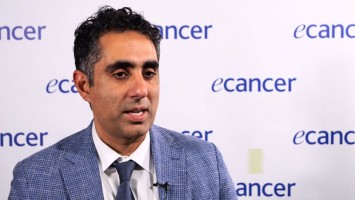We are talking about sentinel lymph node detection in women with uterine cancer, especially what the situation is in African women. There’s quite a lot of data coming out of Europe and North America that detecting the sentinel lymph node in uterine cancer is a viable option that can be used as part of tailored treatment and in some cases, like endometrial cancer, it is becoming the standard of care where sentinel lymph node dissections are done and that’s all that is done. Now, there’s no data on women in Africa and we need to investigate this because especially in South Africa we have a very high incidence of tuberculosis, HIV and pelvic inflammatory disease. We do not know how these diseases would influence the lymphatic system and the functioning of it so we actually need to investigate that.
So we are busy with the study, we are looking at the best way of detecting these lymph nodes to see if these lymph nodes because one of the things that goes with sentinel lymph node biopsy is minimally invasive surgery where we do cancer surgery through a laparoscope which allows the women to recover quicker which I think is very important in a resource poor setting for these patients to get back to work as soon as possible because they are out of an income for the time that they are sick. So we are investigating this and from our preliminary results of the first about thirty patients we have on the study, it seems that our detection rate is a bit lower than what is reported elsewhere in the world.
Why is this?
We think that this is because of these infections of HIV, TB and pelvic inflammatory disease because if we do a sub-analysis of results and we look at patients who have signs of previous infection, compare them to patients who don’t have signs of previous infection, then the patients with previous infection are the ones that have lower detection rates of these lymph nodes.
What are the available methods?
The methods available, the one that we use at the moment is methylene blue. So we would inject methylene blue in the cervix and we also inject technetium into the cervix and then do a lymphoscintigram before the time. In cases of open surgery you can then use a gamma probe to find these. We don’t have a laparoscopic gamma probe, we are in the process of getting one, so that would be to increase detection rates. Then from next year we will be looking at indocyanine green which is another way of doing it but for that you need a near infrared camera and we have been able to get a loan model from one of the companies for which we are very grateful. So we will have it for next year to see if it makes a difference.
What can you do with this knowledge?
What we hope it will do is to put us in a position where we can identify which patients are the best ones or for which patients is it safe to do it. That’s what we are hoping to get out of that. Because it remains a good option and we must first see how good this option is before it becomes recommended therapy. So hopefully when the study is completed in a year’s time or so we will have an idea which category of patients would actually be good candidates for it. But the way that sentinel lymph nodes work is that you can do it on every patient, so if you do it on the patient and you don’t find the sentinel lymph nodes then you will just go ahead and remove the rest of the lymph nodes anyway. But it will be important, very important, to also look at false negative rates so that we can know which patients in which group the false negative rate might be a problem so that we avoid doing it in that group of patients.
How many patients are you going to look at?
We are going to recruit 900 patients to the study of both cervical cancer and endometrial cancer early stages.








